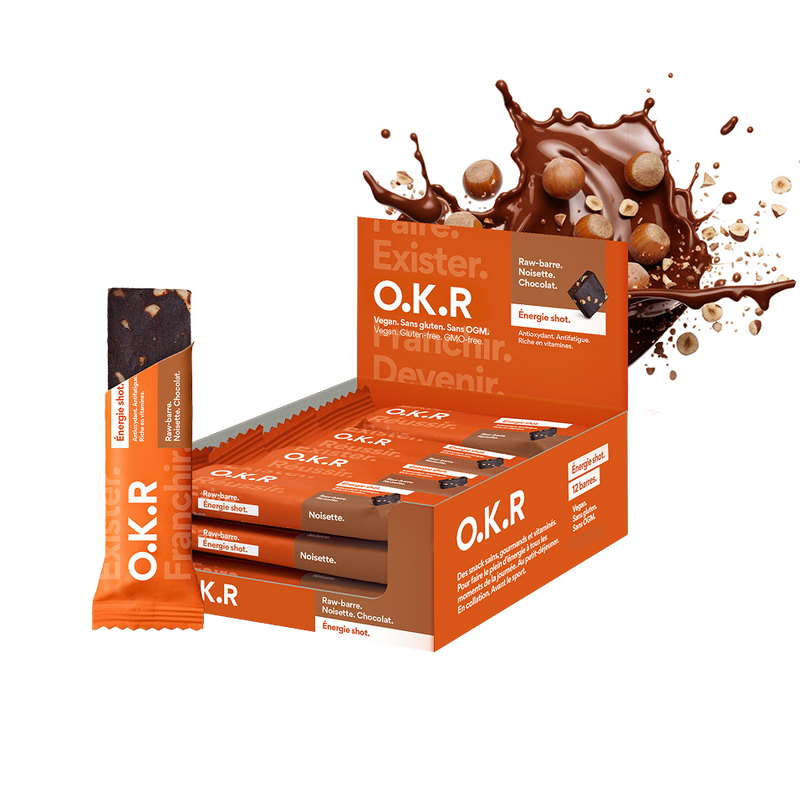Particularly well-known in the world of bodybuilding, BCAAs possess anabolic properties, meaning they stimulate the construction of tissues such as muscles. These properties make them very useful when gaining muscle mass. What exactly are BCAAs? How do they work in your body? How many should you consume, and in which foods can you find them?
What are BCAAs?
BCAAs (Branched Chain Amino Acids) are branched-chain amino acids. This term comes from their molecular structure. As a reminder, a protein is a combination of several amino acids. These are the building blocks of proteins. Of the nine essential amino acids, three are branched: isoleucine, leucine, and valine.
Reminder.
Branched-chain amino acids (BCAAs) belong to the essential amino acid family. They cannot be synthesized by the body and must therefore be obtained through food.
Leucine.
This amino acid acts as a muscle-building trigger and promotes the development of muscle mass. Consumed after physical exertion, leucine allows bones, skin, and muscles to rebuild properly. It is recommended to consume between 1 and 20 grams of leucine per day, depending on the intensity of the physical activity and your body type.
Did you know?
Leucine is most effective when consumed in servings of at least 5 grams. However, be careful not to consume too much leucine per day. An imbalance can lead to a deficiency of isoleucine and valine. This is why it is important to combine leucine with the other two branched-chain amino acids. This is why most BCAA supplements contain leucine, isoleucine, and valine in a 2:1:1 or 4:1:1 ratio.
Valine.
Valine is rapidly absorbed by muscles, making it particularly useful during post-exercise recovery. Combined with leucine and isoleucine, it helps increase muscle mass. There is no recommended daily intake, but it is recommended not to exceed 20 grams per day. Although valine deficiency is rare, it can cause growth retardation in infants.
Isoleucine.
Isoleucine contributes to the production of energy that will then be used during muscle contraction. During exercise, it helps improve your endurance capabilities. In athletes, isoleucine promotes optimal recovery and prevents muscle catabolism, i.e., muscle wasting. The recommended daily intake is between 1 and 20 grams per day, depending on the intensity of the physical activity. An isoleucine deficiency results in significant physical fatigue.
Summary.
The recommended daily intake for BCAAs are:
- 1 to 20g for leucine and isoleucine
- 20g maximum for valine
BCAAs are naturally provided by food, however there are also supplements in powder or capsule form.
All OKR meals contain all amino acids.
How BCAAs work in the body.
BCAAs are known to stimulate muscle protein synthesis. Indeed, if you consume BCAAs in addition to doing bodybuilding (or other strength sports), protein synthesis, especially muscle protein synthesis, will be optimized. Branched-chain amino acids help increase muscle mass and limit protein breakdown: they are said to have an anti-catabolic role. BCAAs are therefore very interesting when your goal is to
Did you know?
If you are forced to stop training (due to injury, for example), increasing your BCAA intake will help limit muscle loss.
The interest of BCAAs for sport.
Before training.
BCAAs have anabolic properties, meaning they help increase muscle mass and therefore limit muscle loss during intense workouts. Therefore, it's a good idea to take BCAAs before your workout to limit muscle catabolism.
During training.
There are several reasons why it may be beneficial to consume BCAAs during your workout. BCAAs make up 1/3 of the protein found in muscle. Your body will use this BCAA intake to produce energy and thus slow the depletion of carbohydrate, fat, and protein stores. This saving of muscle glycogen helps slow the onset of exercise-related fatigue and therefore improve your performance. Therefore, consuming BCAAs during training is beneficial if your goal is to gain muscle mass. To optimize the impact of taking BCAAs, it's important to know how to train.
After training.
For optimal recovery, protein is essential. It helps repair and build muscle. Studies have shown that consuming BCAAs post-workout can reduce exercise-related muscle soreness. BCAAs preserve the integrity of muscle fibers and reduce post-workout fatigue. They will also stimulate muscle growth if your overall protein intake is sufficient.
Summary.
BCAAs help build and maintain muscle mass, and increase protein synthesis needed to continually progress during your workouts.
Foods rich in amino acids.
Plant-based foods rich in BCAAs.
Plant-based foods rich in BCAAs include beans, peas, cashews, walnuts, almonds, peanuts, and hazelnuts.
Foods of animal origin rich in BCAA.
Animal products rich in BCAAs include eggs, fish, meat, and dairy products.
Common questions about BCAAs.
Are there any side effects from taking BCAAs?
Taking BCAAs is not harmful to your health because they are essential amino acids that are naturally provided by food. However, there are contraindications and possible side effects if they are taken in excess. Excessive consumption of BCAAs can lead to gastrointestinal disorders as well as excessive ammonia levels in the blood, which can be toxic to the brain. Any supplementation must be accompanied by sufficient physical activity. BCAA supplementation is contraindicated for pregnant or breastfeeding women, as well as people suffering from multiple sclerosis, severe mental retardation, or chronic alcoholism.
When to consume BCAAs?
Depending on your goals, you can consume BCAAs before, during, and/or after your workout. It is recommended to consume between 5 and 10 grams per serving. Since amino acids are absorbed within 20 minutes, you can take them 30 minutes before your session, for example, or right after. However, BCAAs are not miracle products and will not replace the physical exercise and muscle fiber stimulation necessary for muscle development. To get the most out of BCAAs, it is important to train regularly and eat a varied and balanced diet.
In summary.
BCAAs are branched-chain amino acids that help build and maintain muscle mass and increase protein synthesis, which is necessary for physical progress. BCAAs are naturally present in plant and animal foods, but they also exist in supplement form (in powder or capsule form).













